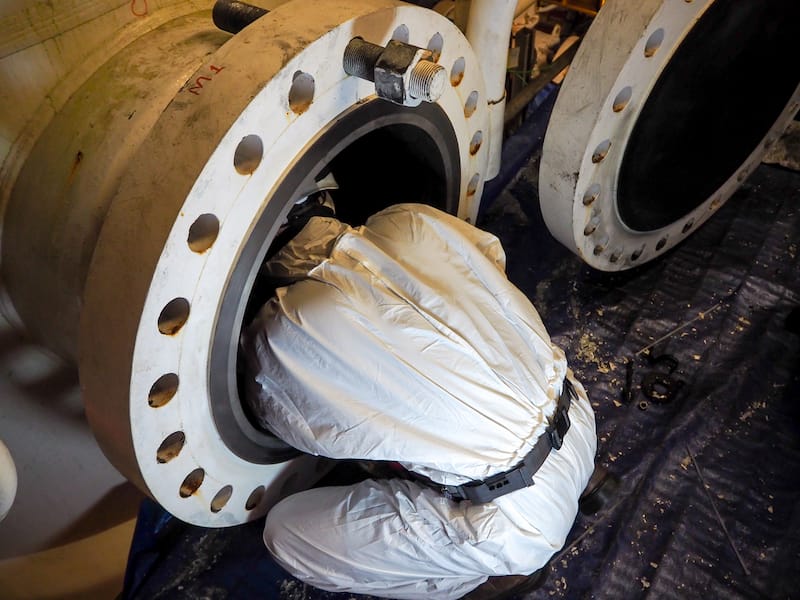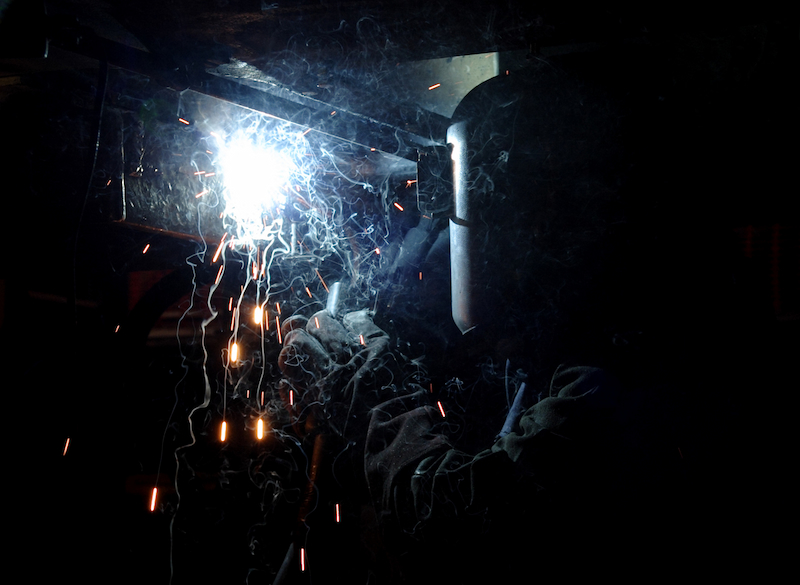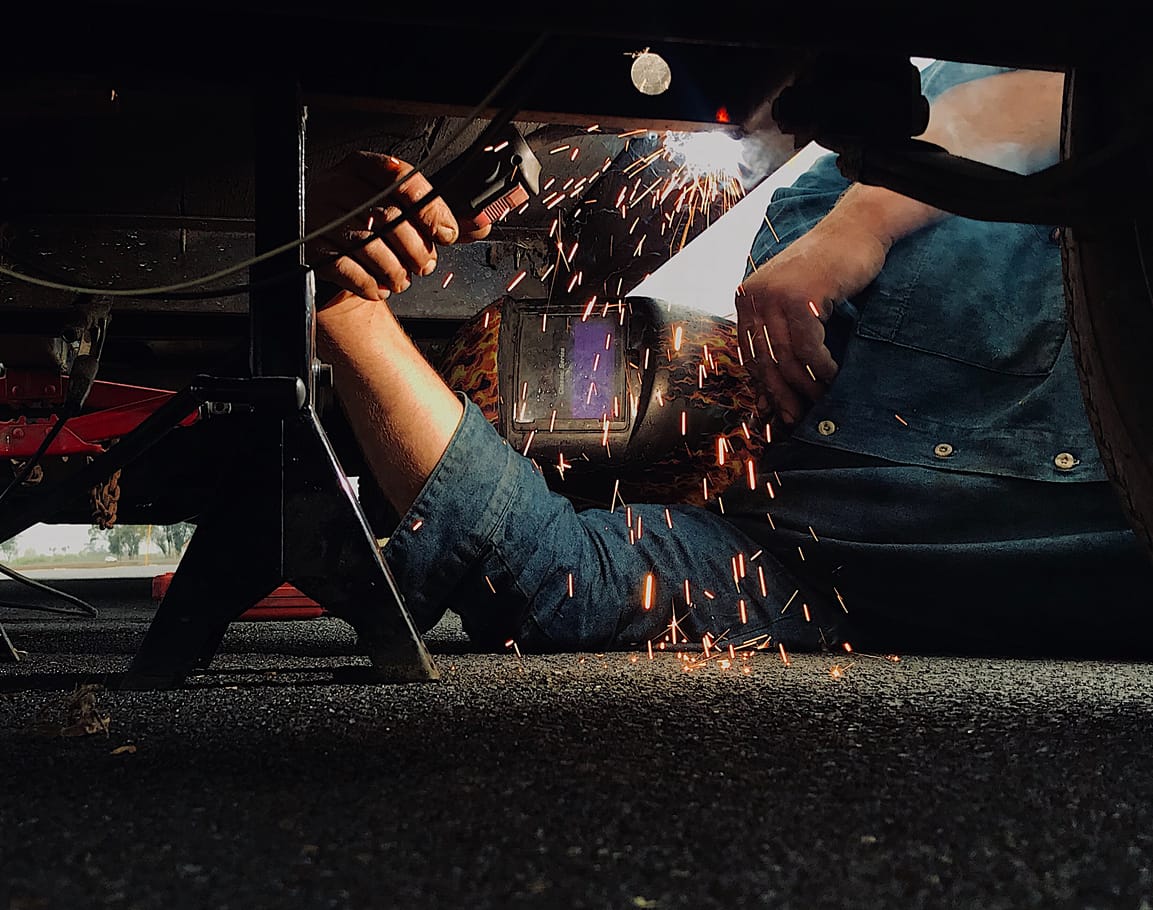How To Weld Safely in Confined Spaces
There are a number of reasons why welding conditions may be undesirable. The shape or position of the workpiece, the size of the workspace and limited ventilation can all present hazards to hobbyists and professional welders alike. As a result, welders often find themselves needing to lay under pipework, squeeze into narrow or tight spaces or maintain uncomfortable positions for extended periods. When conditions are less than ideal, it’s more important than ever to take steps to protect yourself and mitigate the risks. Today, we’re going to explain the dangers of welding in confined spaces and the steps you can take to safeguard yourself whilst still producing a high-quality weld.
The Risks of Welding in Confined Spaces
To understand how to weld safely in unfavourable conditions, we first have to understand the hazards and how they occur. When we talk about confined spaces, we’re not just referring to small spaces. A confined space can include open-topped chambers, ductwork, poorly-ventilated rooms and any area that forces the welder to work with an abnormal, forced posture. The hazards produced by confined space welding include:
- Gas, steam and dust gathering in the space and reaching harmful concentrations increase fire risks.
- Shielding gases such as pure argon, argon/CO2 mixes, helium and nitrogen accumulating in the air, leading to asphyxiation.
- Inhaled fumes and dust, which can include metal and metal oxides in specific processes and can lead to lung disease.
- Metals heated to high temperature adding additional heat to the space.
- Limited freedom of movement and forced postures.
How to Mitigate the Risks of Welding in Confined Spaces
With so many hazards in play, it’s essential to take steps to minimise the dangers before beginning the welding process. Before welding in confined spaces, you should take time to:
- Remove working materials or gases that are unnecessary to the current welding job.
- Inspect and ensure all equipment used in the process, including the welding gas, machines, PPE and consumables, are in good working order. Do not use fuel-powered devices in confined spaces.
- Ensure only trained personnel are permitted to enter the work area.
- Ensure there is a viable, unobstructed emergency exit route available.
- Ensure the welder is wearing the appropriate PPE, which, depending on the application, may include flame-retardant clothing and protective respiratory equipment.
- Do not weld in confined spaces alone. Ensure someone is supervising and that the welder has a clear, direct line of communication with this person in the event of an emergency. This is similar to working at height on a ladder and having someone spot the ladder for you.
- Adequate forced ventilation when natural ventilation is poor.
Welders working in confined spaces should take regular breaks to allow any excess accumulation of shielding gas to dissipate and not engulf the area.

Air Quality in Confined Space Welding
Maintaining good ambient air quality in the area is vital in all welding scenarios, but none more so than when working in a confined space where there is more chance for fumes to accumulate quickly. MIG welding gas and TIG welding gas are crucial components to many types of welding, but workers need to respect that fumes generated by the process can be incredibly harmful.
Maintaining a breathable environment can be challenging as gases build up and displace oxygen. Before beginning the weld, you should test the space to ensure it is fit for work, with an oxygen content of 21% and no toxic, explosive or flammable gases or vapours present. You should use a high-quality welding fume extractor alongside gas detection equipment to monitor the atmosphere during the weld.
Addressing Risk of Falling or Being Trapped
Forced posture and restricted movement when welding in tight spaces can increase the risk of slipping, stumbling or tripping when leaving the space, or even getting trapped in a position where breathing may be restricted. For this reason, you should take care to ensure the floor of the work area is dry and grease-free, and the welder should be wearing non-slip, insulated safety boots. Floors should also be free from obstructions, and as touched upon earlier, an emergency evacuation route should be planned out before welding starts.
Controlling Electrical Hazards
You should take special care to ensure electrical safety, particularly if the welding job involves working inside a metal space – examples include pipes and tanks. Welders must be aware that the metal of the enclosed space will become a part of the welding circuit and that any metal they then touch will also be a part of that circuit. In these situations, it is recommended that the welding power source be located outside of the immediate work area, and all cables entering the space should be adequately insulated.

Welding in confined spaces can be challenging, and it is always advised that you avoid it if possible. However, if avoidance isn’t an option, make sure you follow safety procedures, wear the correct protective equipment, and take regular breaks to mitigate the risks involved. Please get in touch with Bottle Gases today if you would like to learn more about the bottled gas, 15kg butane gas bottles, 10kg gaslight or equipment we can supply.


